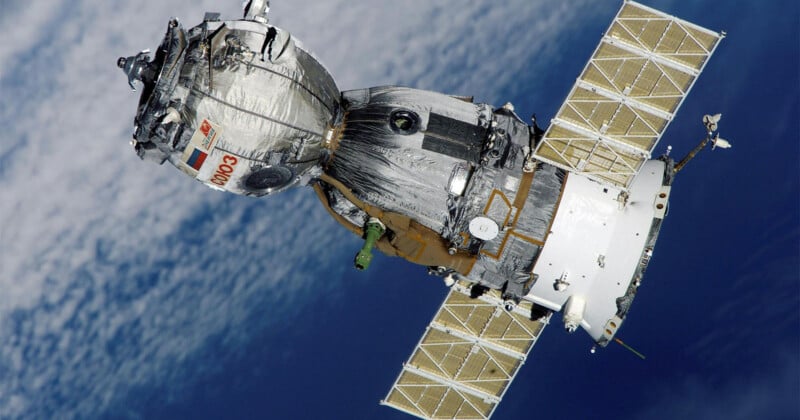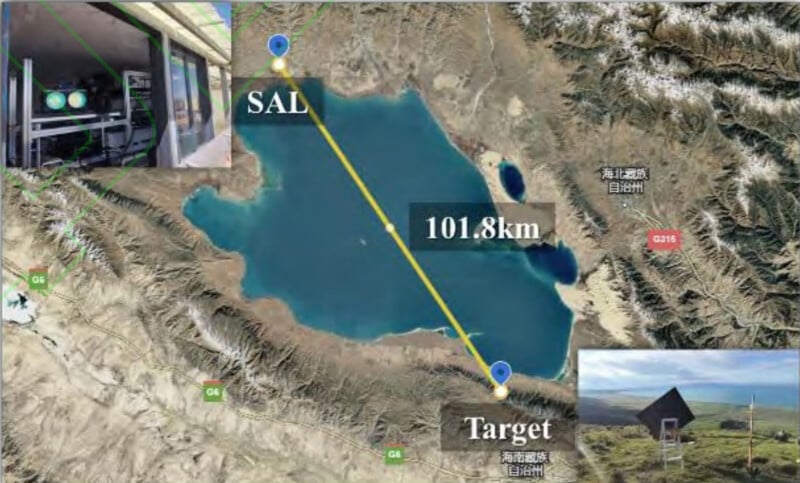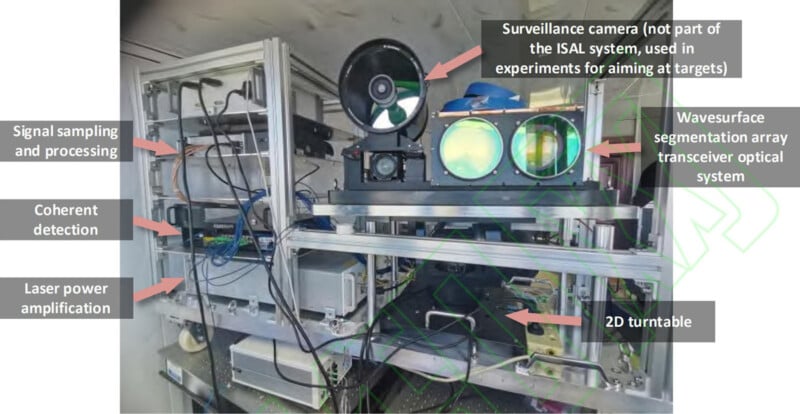China Made a Spy Camera That Can See Faces from Space

Chinese scientists have built a surveillance camera with unprecedented resolving capabilities. The powerful laser-based delivered millimeter-level resolution from 100 kilometers (62 miles) away, an achievement previously thought impossible.
The scientists from the Chinese Academy of Sciences’ Aerospace Information Research Institute tested the new camera system at Qinghai Lake in remote northwest China, South China Morning Post reports. During the test, the synthetic aperture LIDAR (SAL) system looked at a target 101.8 kilometers away across the large lake and could decipher details just 1.7 millimeters across (1/16 inch). The SAL measured the distance to the objects within a margin of 15.6 millimeters (0.6 inches). SCMP describes this impressive performance as “100 times” better than leading spy cameras and lens-based telescopes.
LIDAR, which stands for light detection and ranging, captures images by striking an object with a very precise laser and then measuring the time it takes for the reflected light to return to a receiver. Often used to make high-resolution maps, laser-based imaging has an existing basis in military surveillance technology. However, prior attempts have been relatively lackluster compared to the new SAL camera.

In 2011, Lockheed Martin achieved an azimuth resolution of two centimeters (0.8 inches) from 1.6 kilometers (one mile) away with a LIDAR camera. Chinese scientists later achieved a five-centimeter (1.97-inch) resolution from 6.9 kilometers (4.3 miles), SCMP reports. The move from these results to SAL’s performance is incredible.
The significant advancements are possible thanks to a powerful 103-watt laser, advanced real-time data processing, adaptive algorithms that reduce the noise of the laser’s light, and a very large optical aperture all play key roles.

“This isn’t just about seeing a satellite — it’s about reading its serial numbers,” a researcher not involved in the study told SCMP under the condition of anonymity. “At these resolutions, you could detect micrometeoroid damage on solar panels or identify specific sensor payloads.”
While the breakthrough results are impressive, there are significant limitations to laser-based camera systems. The test was performed during perfectly clear weather for a reason — atmospheric conditions can significantly hamper a LIDAR camera. SAL cannot track a moving target in its current form, so that’s another hurdle.
Nonetheless, SAL breaking records from 100 kilometers away is a huge deal — that’s how far the boundary between the atmosphere and space is from Earth’s surface, also known as the Kármán Line.